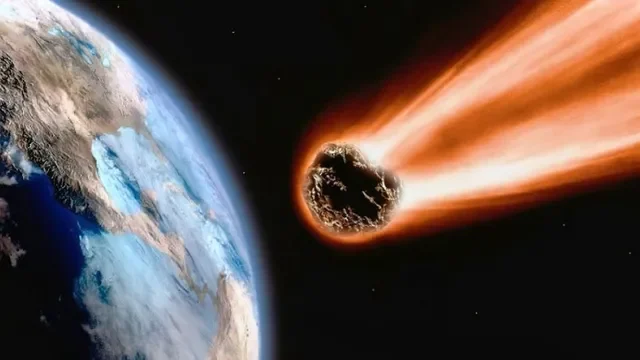
Giant Asteroid Approaching Earth: Should You Be Worried?
A massive asteroid, designated 2003 MH4, is making headlines as it speeds towards Earth. Dubbed a "potentially hazardous asteroid" (PHA) by NASA, its size and velocity have prompted increased monitoring, but is it a cause for alarm? Let's break down what you need to know about this celestial visitor.
According to reports, Asteroid 2003 MH4, also known as 387746 (2003 MH4) will approach Earth around May 24, 2025. Its diameter is estimated at 335 meters (approximately 1,100 feet), making it comparable in size to the Eiffel Tower or three football fields placed end-to-end. It's hurtling through space at an impressive 14 kilometers per second (around 50,400 km/h).

While 6.68 million kilometers might seem like a safe distance, it's considered a "close call" in astronomical terms, approximately 17 times the distance between the Earth and the Moon. This proximity, combined with its size, qualifies it as a PHA.
The designation of PHA isn't meant to scare, but rather to highlight the need for vigilance. NASA's Center for Near-Earth Object Studies (CNEOS) and the Jet Propulsion Laboratory (JPL) are diligently tracking 2003 MH4 using ground-based telescopes and space observatories. They employ orbital modeling and radar observations to predict its future path.
2003 MH4 belongs to the Apollo family of asteroids, a group known for their Earth-crossing orbits. These orbits are susceptible to gravitational influences from planets like Earth and Jupiter, potentially altering their trajectories over time.
While the current projections indicate no immediate threat from 2003 MH4, the importance of continuous monitoring cannot be overstated. Even slight variations in its path, caused by gravitational forces or the Yarkovsky effect, could bring it closer to Earth in future flybys.
This event serves as a reminder of the dynamic nature of our solar system and the potential risks posed by near-Earth objects (NEOs). While Asteroid 2003 MH4 isn't expected to cause any devastation, it underscores the necessity of investing in improved telescopic technology, orbital simulation, and planetary defense research.
Ongoing observation is part of a broader planetary defense plan, allowing for the potential development of mitigation strategies should a significant threat emerge in the future. As May 24, 2025, approaches, international space agencies will continue to monitor 2003 MH4, not because of imminent danger, but as a crucial exercise in vigilance and preparedness.
What are your thoughts on planetary defense? Do you think we should be allocating more resources to tracking and potentially deflecting asteroids? Share your opinions in the comments below!